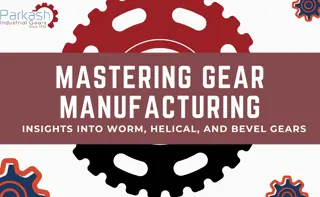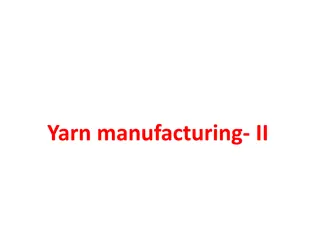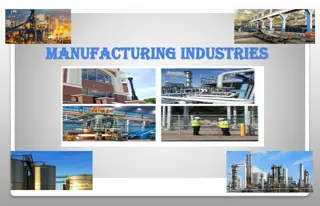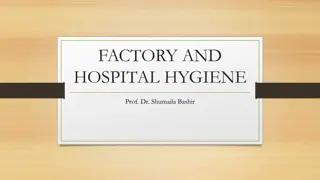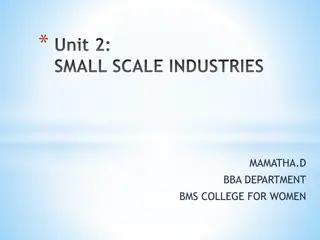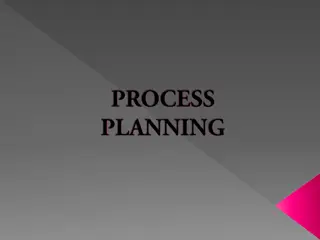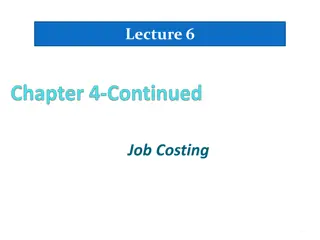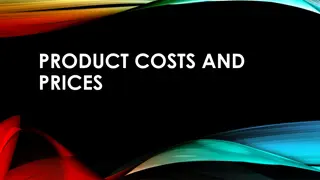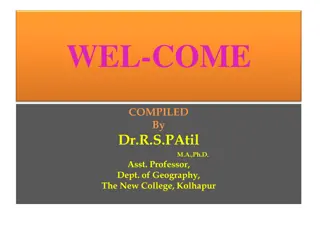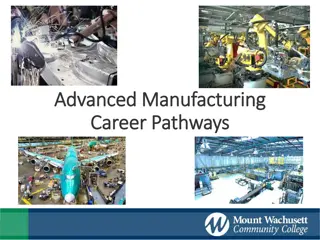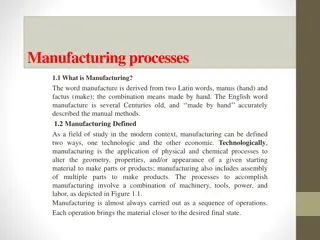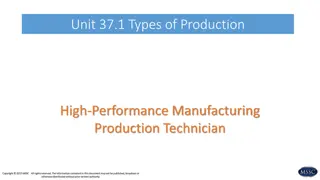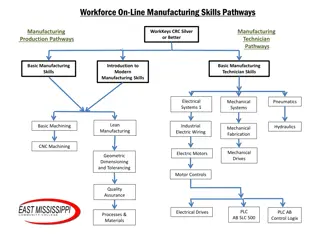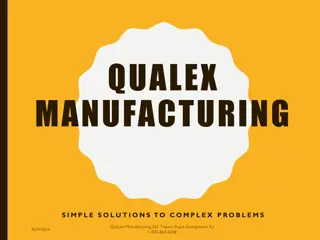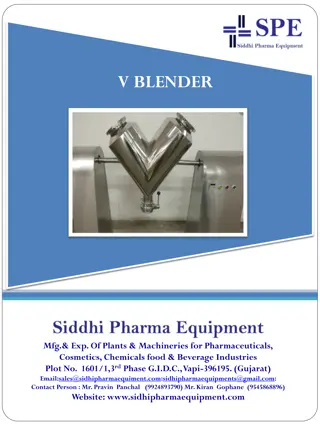Understanding Manufacturing Processes and Industries
Explore the world of manufacturing with insights into the definition, types of manufacturing, economic aspects, industries, and production strategies. Learn about the transformation of raw materials into valuable products, the role of technology in manufacturing, and different types of industries involved. Discover the various manufacturing processes from low to high production levels and their impact on product quantity and variety.
Download Presentation

Please find below an Image/Link to download the presentation.
The content on the website is provided AS IS for your information and personal use only. It may not be sold, licensed, or shared on other websites without obtaining consent from the author. Download presentation by click this link. If you encounter any issues during the download, it is possible that the publisher has removed the file from their server.
E N D
Presentation Transcript
Introduction to Manufacturing Process PRESENTEDBY- NILAMBARDAS SANKHA SUBHRADATTA SOUPAYANBANERJEE
Contents Definition Types of Manufacturing Types of Industries Types of ManufacturingOperations What isJIT? KanbanSystem
Definition What is Manufacturing ? the processof convertingRawmaterialsinto products. The word manufacturing is delivered from the Latin manu factus, meaning made byhand. the conversionof stuff into things (byDeGramon,1998) economic terms for making goodsandservicesavailable to satisfycustomer (by T. Black,1991)
Types of Manufacturing Manufacturing canbe defined twoways: Technology This process to accomplish manufacturing involve a combination of machinery, tools, power and manual labor. Manufacturing also includesthe assemblyof multiple parts to makeproducts. Product Manufacturing Process RawMaterials Profit Machinery Tooling Labor Powe r
Economic Manufacturing is the transformation of materials into items of greater value by means one or more processing involve. Therefore, manufacturing is added value to the material. - Added V alue by changing the material s shape or properties or by combining it with other materialsthat havebeensimilarlyaltered. Manufacturing Process Value added ProcessedMaterial StartingMaterial Material inprocessing
Types of Industries SECONDARY INDUSTRY TERTIARY INDUSTRY PRIMARY INDUSTRY MANUFACTURING INDUSTRIES
Agriculture Forestry Fishing Livestock Mining Petroleum Aerospace Automotive Building materials Chemicals Computers Electronics Pharmaceuticals Textile Wood & furniture Banking Communication Education Entertainment Financialservices Government Hotel Insurance Restaurant Transportation Tourism Realestate SECONDARYINDUSTRY TERTIARYINDUSTRY PRIMARYINDUSTRY
Types of ManufacturingOperator 1. Project 1 to 10 units [LowProduction] 2. Job shop 10 to 100units 3. Batch 100 to10,000 units [MediumProduction] 4. Mass Above 10,000units [HighProduction] Production Quantity: number of unit produced annually of a particular product type. Product Variety: different product designs or types that are produced in the plant.
1.Project Productposition remainsstationaryduringthe manufacturing process size, weight, locationof the product. Materials, people, machinery arebrought to the product or product site. Based on customerspecifications. Example:bridge,building construction,aircraft, ships,locomotive.
2. JobShop Low volume and production quantities called lot sizes with high product variety. Satisfiesamarketfor nonstandard or uniqueproduct. Requirehigh skill levelslabor to operate avariety of equipments. Ashortdurationactivities to providecustomgoods. Example:spacevehicles,reactorvessels,turbines,aircraftcomponent.
3.Batch Batch production produce or process any product in groups which is called batches . Can produce a variety of products opposed to a continuous production process, or a one timeproduction. Useful for industries that makes seasonal items\products for which it is difficult to forecastthe demand. Example: similar standard items made periodically in batches; bakery, paint, handtools.
4.Mass Alsoknown asflow production,repetitive flow production,seriesproduction. Machinery (e.g.: robots, machine press) that is needed to set up the mass production line is soexpensive. Involved fewer laborcostandafasterrateof production. Plant andequipmentsarearrangedin aflow line layout. Example: light bulbs, refrigerator,TV.
What is Just InTime (JIT)? Raw materials, parts & components are delivered to the manufacturer just in time to used, parts & components are produced JIT to be made into subassemblies & assemblies, and products are finished JIT to be delivered to the customer. JITisalso known as Pull System . It tendsto simplify andbreakthe whole systeminto small,autonomous units.
Benefits ofJIT: Low inventory carryingcost. Reduced inspection and reworking ofparts. Highquality productsmadeat low cost. Reductionof: 20% to 40% in productcost. 60% to 80% in inventory. Up to 90% in rejectionrates. 90% in leadtimes. 50% in scrap &rework.
KanbanSystem Integrated with the implementation of JITconcept. Kanban means visiblerecord . Originally consisted of two typesof cards: o Production Card: authorizes the production of one container or cart of identical, specified parts ata workstation. o Conveyance\move card: authorizes the transfer of one container or cart of parts from that particular w/station to the w/station where the parts will beused. The cards contain informationon: Types of parts. I. Location where issued. II. Partnumber. III. Number ofitems in container. IV.
References SlideShare manufacturing] Wikipedia[www.wikipedia.net] [https://www.slideshare.net/juffrizal/lecture-01-introduction-to-






